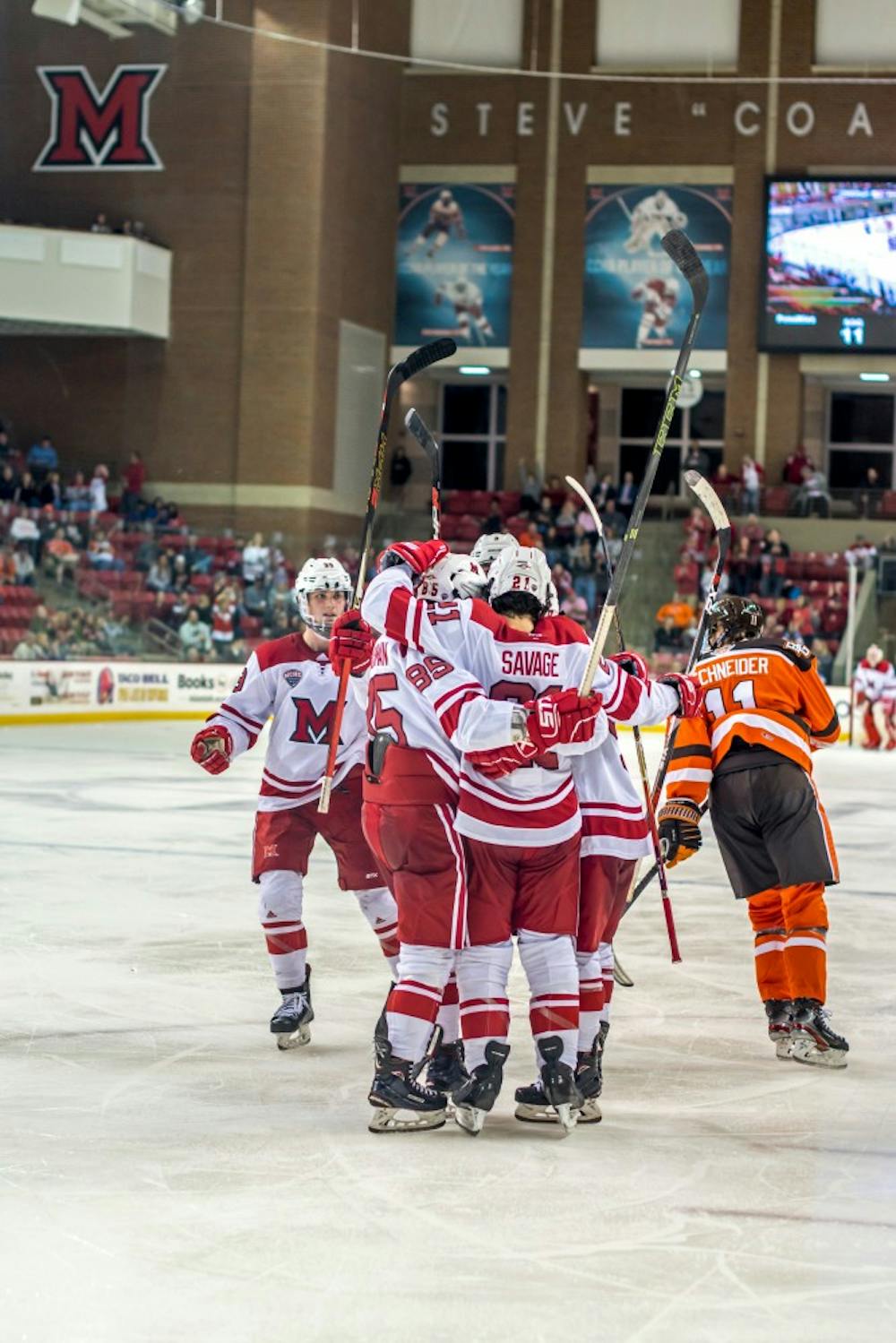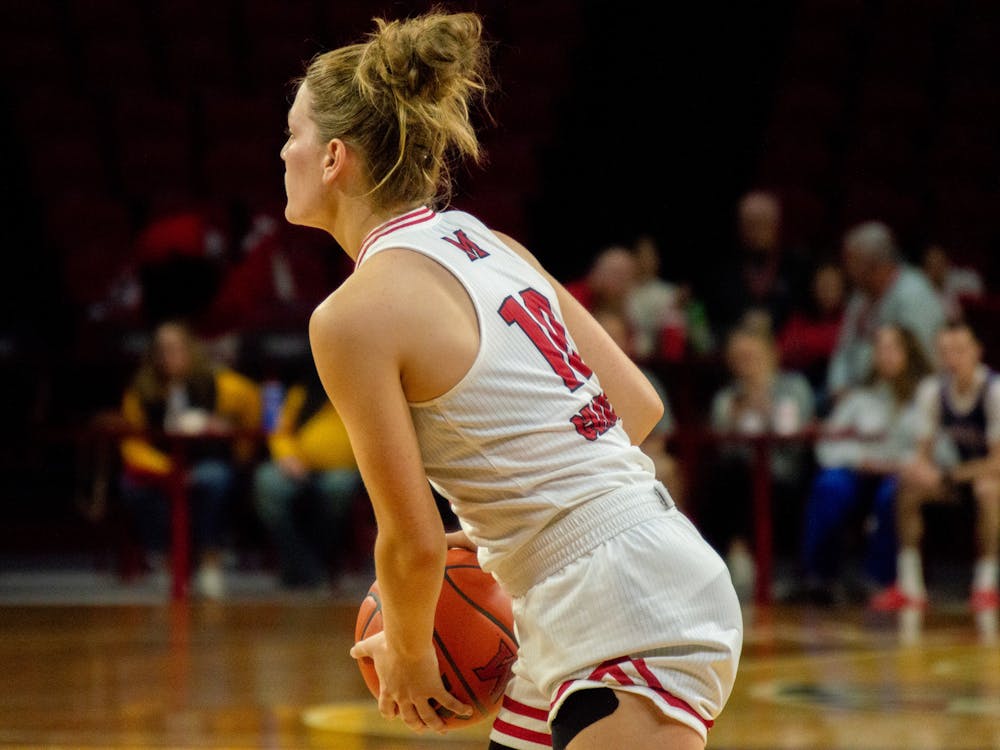The Miami RedHawks hockey practice doesn’t officially begin for fifteen minutes, but the ice rink already hosts a flurry of activity on Thursday afternoon.
Players in red and white jerseys glide across the Goggin ice, angling wrists for slap shots that echo off the boards. When they disappear into the locker room, chatter dims to nothing, and for several moments, the ice is silent, marked only by the criss-crosses of skates and the hum of the Zamboni.
Several minutes later, at 2:30 p.m., players scoop pucks onto sticks, filing back onto the ice one by one. Head coach Chris Bergeron, dressed in black pants and a pullover with red hockey gloves and a whistle, moves to the center of the rink. After a series of stretches, scrimmages begin. The players slap the puck back and forth, shooting goals, circling each other.
“The initial thing that strikes me of what’s special about this group is that they’re extremely close to one another,” Bergeron said.
The scoreboard displays no score but stays lit up, eliciting a sense of excitement and preview for Sunday’s game, the first one with Bergeron as head coach.
Bergeron played at Miami from 1989-1993 and served as team captain for two years. He coached Bowling Green for the last nine seasons and signed on as the 6th hockey coach in Miami’s history on April 5, 2019.
“Everyone’s adjusted fine,” junior defenseman Rourke Russell said. “We’re just really excited to get things going. Everyone loves Bergeron and what he’s done so far.”
Before practice on Thursday, Bergeron addressed the team and named senior forward Gordie Green team captain.
“It was fun to see the team respond once they heard,” Green said. “A lot of claps and a lot of hugs and stuff, which meant a lot to me.”
Green says that since freshman year, he’s learned how to grow more professional as a student and an athlete from older teammates, especially from Zach LaValle who graduated in 2019 and served as a role model for him.
Bergeron says Green has a strong relationship with the rest of the team and leads by example.
“His demeanor as a human being, he’s got time for everybody,” Bergeron said. “Wherever you are in the lineup, freshman, senior, it doesn’t really matter, he’s got time for you.”
Enjoy what you're reading?
Signup for our newsletter
On the ice, the only way to tell players apart from behind are the numbers plastered onto their jerseys and the hint of light hair or red curls peeking under their helmets. Sophomores Andrew Sinard (No. 4) and Monte Graham (No. 18) fist bump each other at the bench. The faces of swirling players mirror dedication and focus.
“There’s been a lot of positivity around the rink,” Green said. “And everyone is excited to come to the rink, which has made it a lot more fun.”
Players of various heights scatter the ice, some towering over others. Skaters breeze across the rink while ice sprays with sudden stops near the goal.
“Hold yourself to a higher standard,” Bergeron yells. He calls for a change, and players switch from bench to ice in a matter of seconds.
Sophomore forward Noah Jordan (No. 14) removes his helmet, pushes his hair back, grabs some water and claps the helmet back on. After switching jerseys, skaters huddle together, embodying this legacy of athletic talent and skill.
“I think the culture and tradition for Miami hockey is just so deep, and it’s gone on for so long that it means a lot to everyone who is a part of it,” Graham said. “And so you’re kind of not only doing it for the people you’re here with now, but for everyone who came before you.”
3:30 p.m. arrives and signals the end of practice. Bergeron doesn’t blink, letting the play continue. He directs everyone to the goal line and begins a suicide drill where the guys hustle, coming to a crisp stop at each line.
A few minutes later, the coach and players gather at center ice, a quiet collage of red, black, green and white jerseys. A sense of power and promise beams about the nearly empty rink.
Three days later, everything began.




